Ferrous – The surge in iron ore prices reportedly cooled late last week in China. According to Business Insider Australia, “Iron ore prices fell heavily for a second consecutive session on Friday, adding to losses seen earlier in the week.
With recent gains in Chinese futures continuing to unwind on Friday evening, there may well be further weakness to come on Monday. According to Metal Bulletin, the spot price for benchmark 62% iron ore fines slumped 2.2% to $101.60 a tonne, extending its drop from the five-year high of $108.62 a tonne set earlier in the week to 6.5%.”
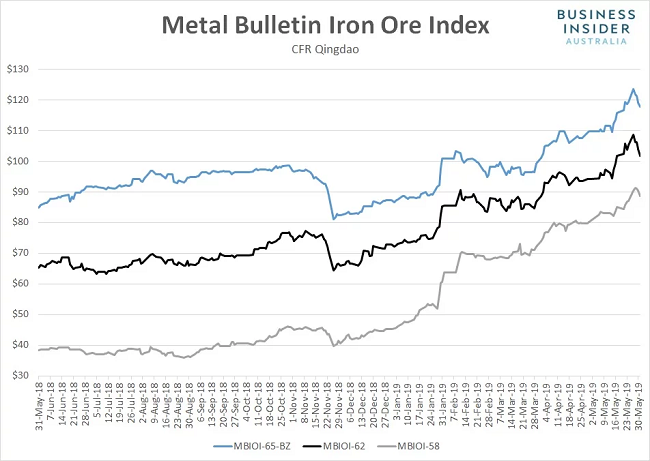
But iron ore prices still remain elevated by historical standards and concerns about increased steel imports from Canada and Mexico, signs of slower demand from the automotive sector, and softening domestic hot-rolled coil prices have raised concerns for investors. Bloomberg reported last week that share prices for AK Steel declined “…as much as 12% {on Tuesday} after the price for hot-rolled coil steel dipped below $600 a short ton for the first time since October 2017. The product traded at $920 in July. ‘Lots of negative sentiment out there,’ said Richard Bourke, an analyst for Bloomberg Intelligence, who compared the $600 mark to a round number like 10,000 for the Dow Jones Industrial Average. ‘There are growing concerns about a slowing global market.’ The steel industry is facing a double whammy of falling prices and rising costs for iron ore. There are also concerns about the strength of the global economy, especially demand for cars and trucks -- AK’s largest market -- and the U.S. lifted 25% tariffs on steel imports from Canada and Mexico earlier this month.” As of Monday morning, the front month U.S. Midwest Domestic Hot-Rolled Coil Steel (CRU) Index Futures contract was indicated at $584 per ton.
Nonferrous –
Trade worries and lackluster Chinese manufacturing data continue to weigh on a range of nonferrous metal prices. Last week, the official reading on Chinese manufacturing PMI for May came in lower than expected at 49.4, down from 50.1 in April and well below the Reuters consensus forecast (49.9). Lead metal prices at the London Metal Exchange continue to underperform the other base metals, declining 10.8% YTD through the end of May due in part to slower global auto sales, but aluminum (-3.1%) and copper (-2.7%) prices have also been pressured lower this year, despite copper supply disruptions.
Reuters reports that “Chile’s state-owned miner Codelco, the world’s largest copper producer, said on Sunday it partially halted work at its El Teniente mine following a fatal accident.” But Codelco is also lowering its copper price expectations this year due in part to the ongoing trade dispute between the U.S. and China: “We had hopes that these conversations between the Chinese and US authorities would be resolved relatively quickly but it looks like that won’t be the case,” Codelco CEO Nelson Pizarro told reporters in Santiago on Friday.
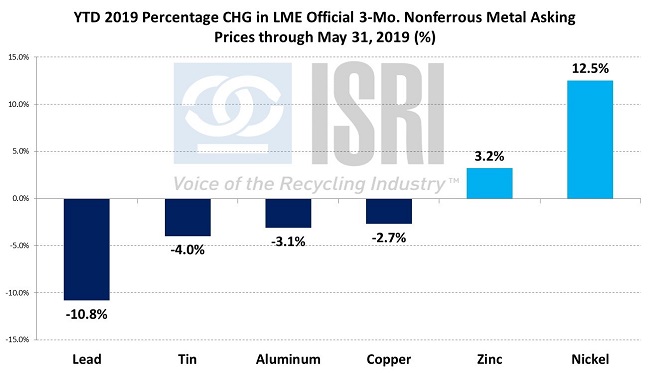
The shifting global trade landscape has also had outsized impacts for the U.S. aluminum can and UBC markets. Here’s the trend in Used Beverage Can scrap prices going back to the last recession:
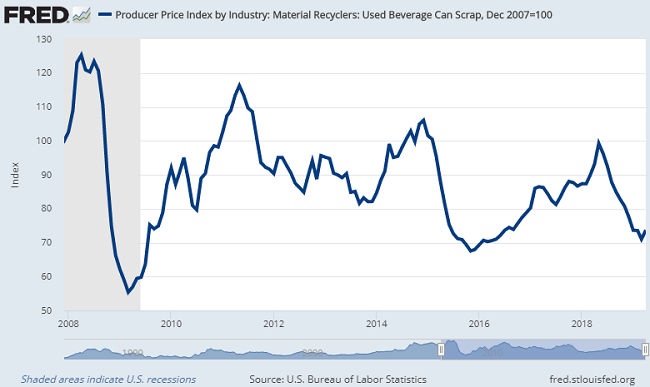
As the Wall Street Journal reported earlier this year, “Used cans are piling up at scrapyards because U.S. aluminum companies are turning fewer of them into new metal, another indication of the economic challenges facing recycling. Arconic Inc. and other aluminum rollers are producing less sheet for beverage cans and more higher-margin, flat-rolled aluminum for automotive and industrial components. Prices for used aluminum cans in the U.S. have fallen about 30% since last summer. Old cans are less versatile than other scrap. The makers of airplane and car parts prefer not to use aluminum made from recycled cans. More new cans in the U.S. are made from imported aluminum.”
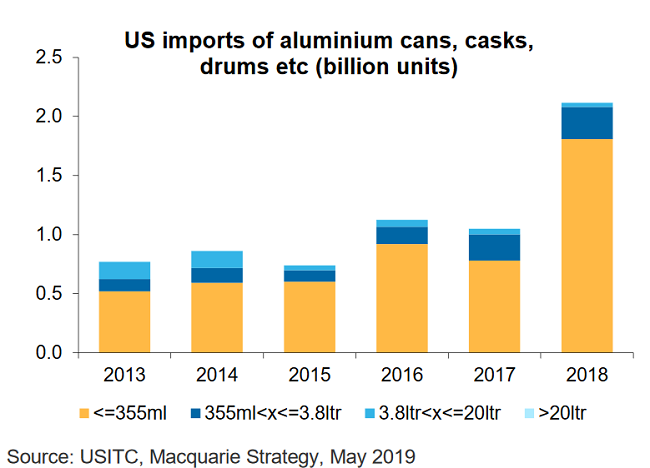
Paper and Plastic –
Recovered paper prices have been steadily dropping since the beginning of 2019. Regional price differentials from RecyclingMarkets.net seem to show that the Midwest prices are starting to blend in with the East Coast and Gulf Region. The West Coast and Pacific Northwest saw sharp price declines that may be remedied with improved transport costs across the U.S. rather than racking up demurrage costs and truck traffic congestion for export. Fastmarkets RISI’s viewpoint article points out that North American packaging market foundations are trending rather differently than in Europe and Asia. The supply glut of recyclable paper would prompt people to assume that packaging producers in the U.S. would be able to lower prices. Mill systems outside of North America are competing for finished board products because their domestic sources are supply scarce as they are much more recycled content dependent than the North American mills. As many mills in the U.S. are integrated with pulp production, European and Chinese paper producing industries are likely to consolidate in order to recapture market competitiveness. A canary in the coal mine for this shift may be Long Chen Paper’s move to only open one recycled containerboard unit at a greenfield site in Songzi, Hubei, China.
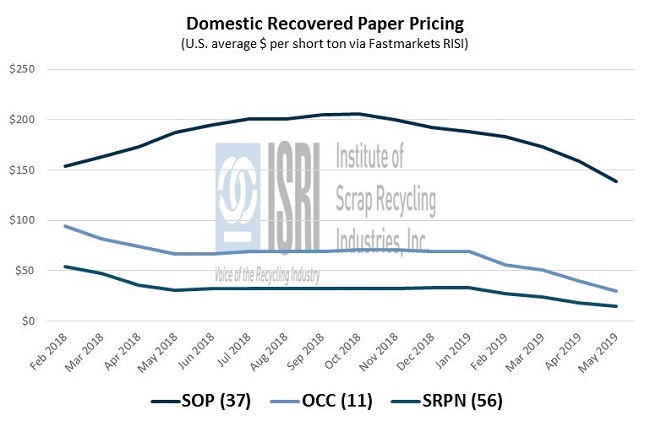
Since the Chinese ban on imports of plastic scrap and contamination restrictions, there’s been a lot of market reshuffling. The price movements for HDPE Bottles and PET have mostly had little effect on mixed #1-7 or #3-7 bales. Mixed plastics are seeing a divergence as sorting for quality has become a necessity to meet what demand is available. During the fall of 2017, prices for HDPE began to rise and exports declined. Commingled #1-7 bales and colored HDPE bales had a relatively high price difference considering other major residential recyclables were falling in value. It made economic sense to add the labor cost inputs to sort out more. This secondary processing niche grew more over 2018 as the value of #3-7 bales went down in value. The consistently lower value of #3-7 to #1-7 bales over this time coincided with HDPE and PET scrap prices being consistently higher than during the latter half of 2017. The flight to quality polymers that can be procured in high volumes is pushing down the quality in lower grade bales.
Back to Main